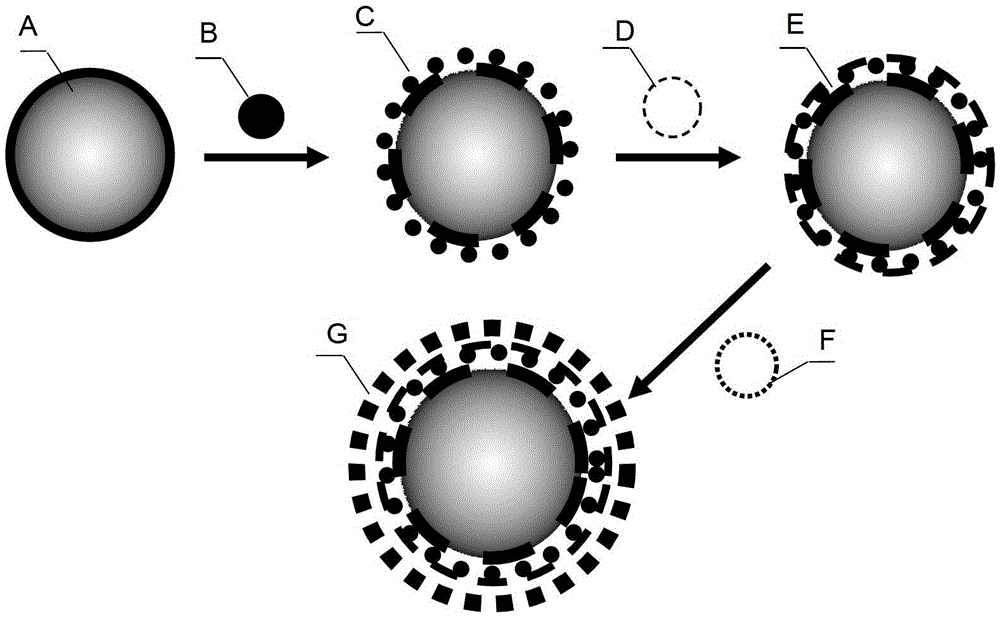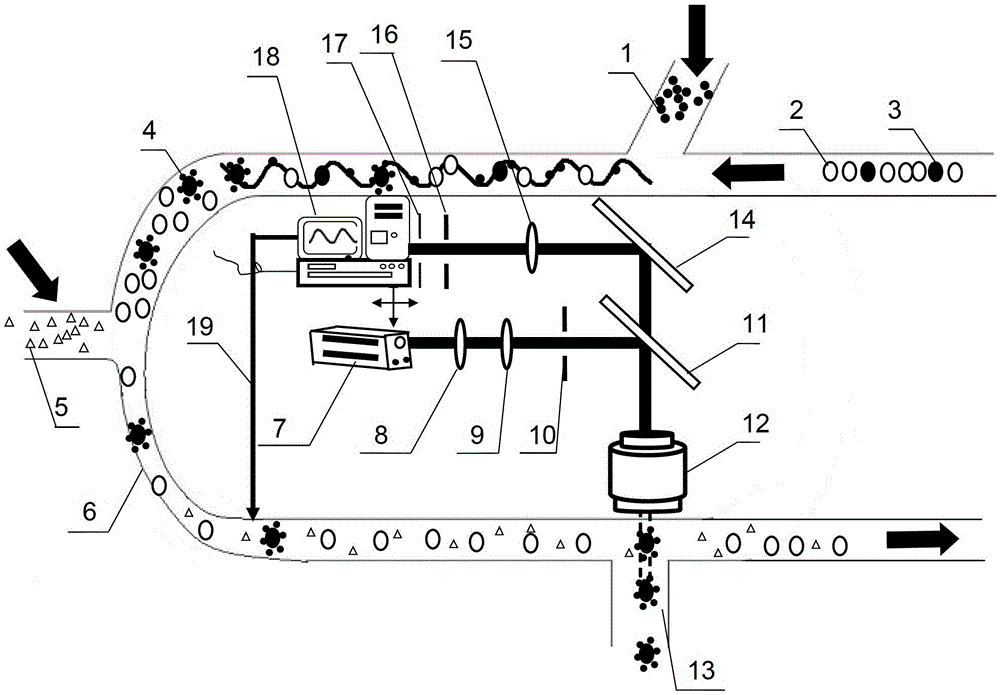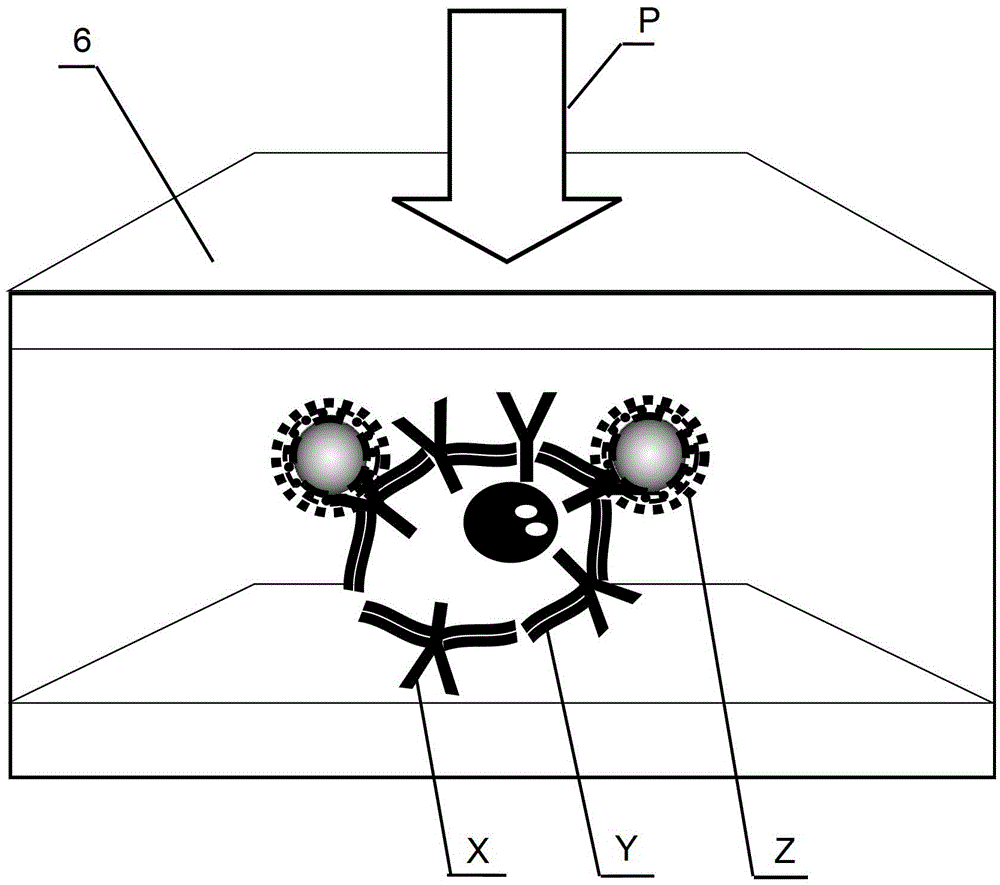A microfluidic system and method for single-beam biological cell detection and screening
A microfluidic system and biological cell technology, applied in the field of single-beam biological cell detection and screening microfluidic systems, can solve problems that restrict the development of cancer cell detection and control systems, eliminate background fluorescence interference, and improve signal-to-noise Compared with the simple effect of optical path
- Summary
- Abstract
- Description
- Claims
- Application Information
AI Technical Summary
Problems solved by technology
Method used
Image
Examples
Embodiment 1
[0032] In this example, the problematic cells are cervical cancer HeLa cells. Before screening, it is necessary to prepare upconversion luminescent nanoprobes. The conversion process is as follows: figure 1 As shown, A is the core structure of upconversion nanoparticles coated with oleic acid; B is 5-mercaptosuccinic acid (MSA); C is the upconversion nanoparticles wrapped with 5-mercaptosuccinic acid (MSA); D is Polyallylamine hydrochloride (PAH); E is PAH-MSA-UCNPs; F is CAE8 antibody; G is the upconversion luminescent nanoprobe that completed antibody modification. First, upconversion nanocore-shell particle structures with a size of less than 10 nm were synthesized. Specifically, yttrium trichloride (YCl 3 ), ytterbium trichloride (YbCl 3 ), and erbium trichloride (ErCl 3 ) powder, oleic acid (OA), oleylamine (OM), and 1-octadecene (ODE) were stirred and heated to 110°C under vacuum for 1 hour. Then add sodium oleate (NaOL) powder and anhydrous NH 4 F and pass N at 310...
Embodiment 2
[0040] Present embodiment except following feature other structures are with embodiment 1: as Figure 4 As shown, the optical tweezers device in this embodiment includes a semiconductor laser 7, a beam expander lens 8, a beam shaping lens 9 and a dichromatic mirror 20, wherein the dichromatic mirror 20 is characterized by near-infrared reflection and visible light transmission, and the semiconductor laser 7 The steady-state laser beam that produces passes through beam expander lens 8, beam shaping lens 9 and dichroic mirror 20 successively, and dichroic mirror 20 is placed at an angle of 45 degrees with this laser beam, and is perpendicular to this laser beam and passes through dichroic mirror 20 light In the direction of the axis, the objective lens 12 is coaxially placed below the dichromatic mirror 20, and the dichromatic mirror 20 deflects the laser beam by 90 degrees, and converges on the focal point of the objective lens through the objective lens 12; the detection device...
PUM
| Property | Measurement | Unit |
|---|---|---|
| wavelength | aaaaa | aaaaa |
Abstract
Description
Claims
Application Information
 Login to View More
Login to View More - R&D
- Intellectual Property
- Life Sciences
- Materials
- Tech Scout
- Unparalleled Data Quality
- Higher Quality Content
- 60% Fewer Hallucinations
Browse by: Latest US Patents, China's latest patents, Technical Efficacy Thesaurus, Application Domain, Technology Topic, Popular Technical Reports.
© 2025 PatSnap. All rights reserved.Legal|Privacy policy|Modern Slavery Act Transparency Statement|Sitemap|About US| Contact US: help@patsnap.com



